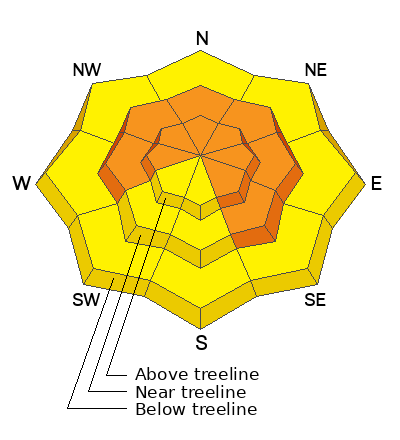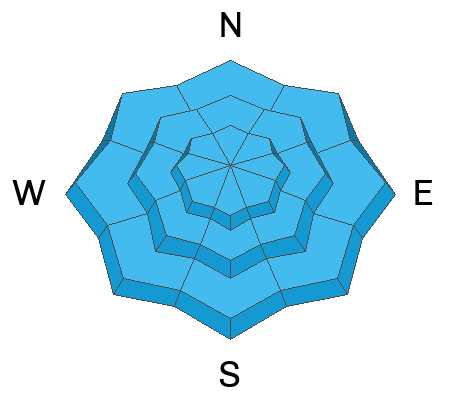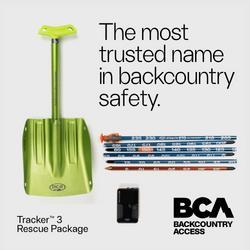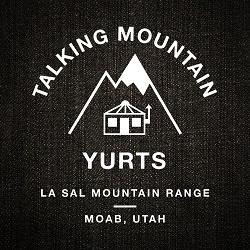Forecast for the Moab Area Mountains

Issued by Eric Trenbeath on
Saturday morning, January 27, 2024
Saturday morning, January 27, 2024
A CONSIDERABLE avalanche danger remains on steep slopes near and above treeline that face W-N-E-SE. Human triggered avalanches failing on a buried persistent weak layer 2'-6' deep are likely.
A MODERATE avalanche danger exists on all aspects below treeline, and on steep slopes facing SW-S at all elevations. Human-triggered avalanches failing on a buried persistent weak layer are possible.
As outward signs of instability decrease, it's important to remember what lies underneath. Continue to avoid slopes steeper than 30 degrees.

Low
Moderate
Considerable
High
Extreme
Learn how to read the forecast here
 Special Announcements
Special Announcements
Road Conditions: The Geyser Pass road has not been plowed since 4" of new snow fell on Wednesday. Many vehicles have made it up, but AWD with good tires are required.
Grooming: Matt and Ben groomed all trails and set classic track yesterday.
Our avalanche beacon checker sign and beacon training park are up and running. A huge thanks to Talking Mountain Yurts for sponsoring those this season!
 Weather and Snow
Weather and Snow
6:00 a.m. Snow and Weather Data
24 Hour Snow 0" 72 Hour Snow 6" Season Total Snow 95" Base Depth at Gold Basin 43"
Winds on Pre-Laurel Peak: NW 10-15 G 25 Temp 12˚ F
Weather
Under clear skies, temperatures plunged overnight. They we will rebound quickly today as high pressure builds over the region. Look for highs in the low 30's today, and high 30's by tomorrow. Warm, sunny weather is on tap through at least Wednesday. The crystal ball shows the possiblity for a strong storm system late next week. Bring it on February!
General Conditions
Incremental doses of snow and overall lack of wind the past week have created the best turning and riding conditions of the season. Soft settled powder over a now mostly supportable base can be found today on shady aspects. Sun and warm temperatures yesterday will have crusted over most southerly aspects. A strong slab is developing over the weak faceted snow underneath and in our travels yesterday, Dave and I did not experience any collpasing of the snowpack for the first time in two weeks. Decreasing signs of instability are good, but don't let this lure you into a false sense of security. We are entering a tricky phase. Thinner snowpack areas remain highy problematic, while deeper areas remain highly suspect. Dangerous avalanches remain possible to likely and avoidance of slopes steeper than 30 degrees continues to be the strategy.
Snowpack and Weather Data
Gold Basin Storm Stake (10,000')
Gold Basin SNOTEL site (10,000')
Wind Station on Pre-Laurel Peak (11,400')
Avalanche Problem #1
Persistent Weak Layer
Type
Location

Likelihood
Size
Description
A persistent weak layer of faceted snow exists about 2 feet below the snow surface. Over the past two weeks it has produced widespread collapsing, a few natural avalanches, and continuously reactive stability tests. In our travels yesterday, Dave and I observed the first signs that this weak layer is gaining strength in some areas. This does not mean we are out of the woods. On the contrary, it means that things are about to get more tricky. When outward signs of instabilty such as collapsing and whumphing are in our face, the danger is obvious. When they aren't present, it can give us a false sense of security. As far as faceted weak layers are concerned, they take a long time to truly go away. We are in the earliest phases of tuning the corner on SOME slopes. Continuing to avoid all slopes steeper than 30 degrees remains the best strategy.
The persistent weak layer problem is not limited to the shady slopes. SE and SW aspects have also have poor snowpack structure. On Wednesday, Dave and I got very reactive test results on a SE aspect at 11,000' (see video below).
Additional Information
Want some more insight into the La Sal Mountains as well as the communal impacts of a tragic avalanche? Check out the latest UAC podcast with forecaster Eric Trenbeath where he discusses the range, it's often treacherous snowpack, and how the devastating avalanche in February, 1992, affected the Moab community.
Sign up for forecast region-specific text message alerts. You will receive messages about changing avalanche conditions, watches, warnings and road plowing closures.
Follow us on Instagram @utavy_moab
General Announcements
This forecast is from the U.S.D.A. Forest Service, which is solely responsible for its content. This forecast describes general avalanche conditions and local variations always occur.




